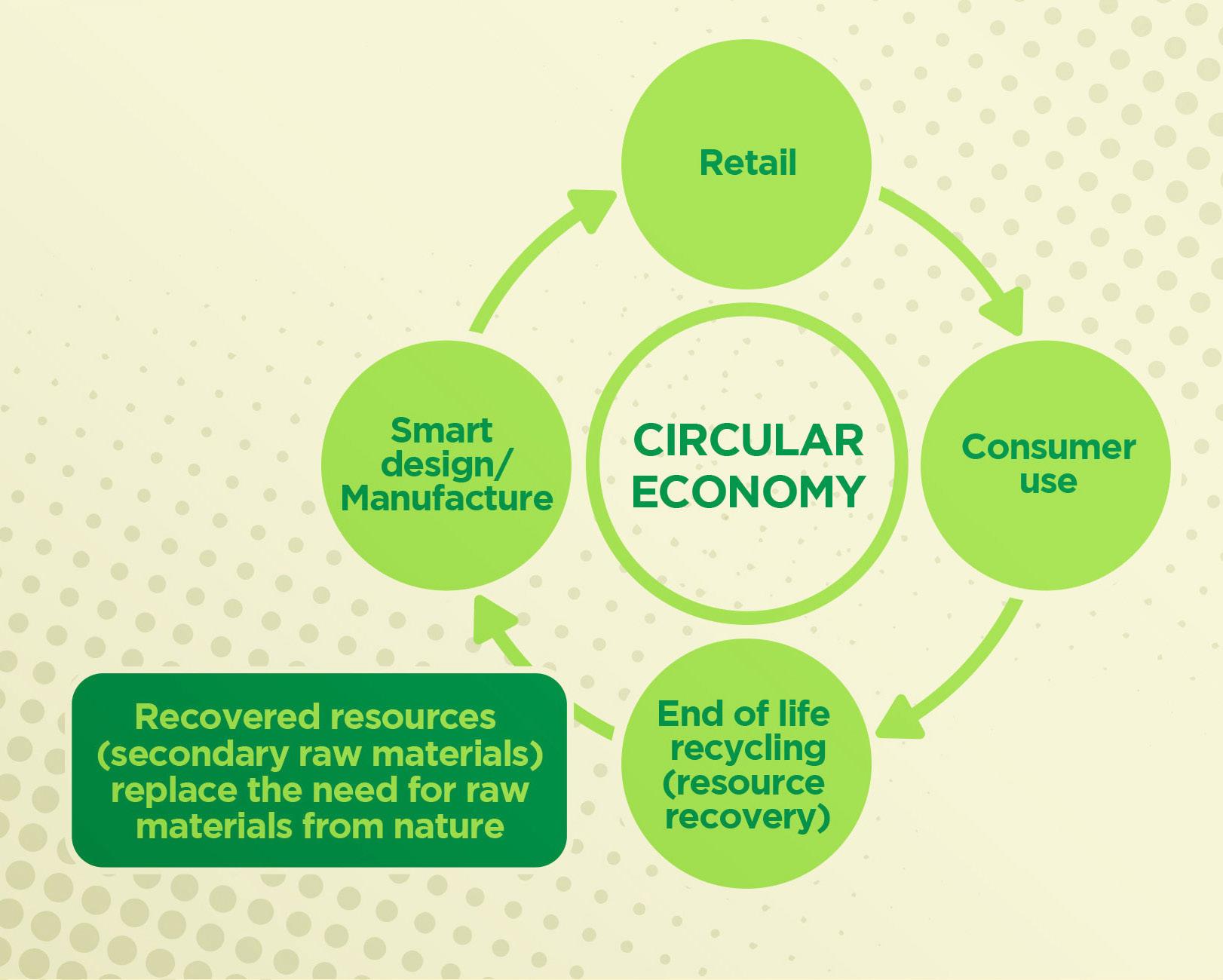
1 minute read
Circular Economy in Action
The world is facing a waste crisis. We’re using up resources, paying increasing dollars to get rid of waste and we’re running out of landfill options. It’s not sustainable.
To deal with the problem, a new concept sweeping the world is called the Circular Economy. It promotes ways to transform waste into valuable products by reusing them, remodelling, and making new products from waste.
Advertisement
Speaking at the Northern Business Breakfast, Melinda Miller, director of the Loop Circular Economy Platform, said, “from food and agriculture to manufacturing, mining, retail, construction and service industries, there are opportunities to do business in innovative ways that marry good business with a good environment and a good economy”.
Most modern production processes are based on ‘linear’ systems which generate waste as a byproduct. This model takes, makes, uses and disposes. A circular loop recycles, refurbishes, maintains and repairs. Waste becomes resources in another form, not destined for landfill.
A local example is the use of end-of-life tyres as the sub-surface for the running track at the Bridgestone Athletics Centre.
A company in Northern Adelaide that is leading the world in circular economy practices is NAWMA (Northern Adelaide Waste Management Authority). NAWMA uses solar panels and gas from landfill to generate electricity, turns glass into sand for industry, recycles mattresses and reduces landfill. By processing a range of materials including plastics, aluminium, steel and glass they are providing secondary raw materials for industry.
Governments are offering incentives for action such as the Federal Government's $190million Recycling Modernisation Fund, the South Australian single-use plastics ban and the SA 2020-2025 waste strategy “Supporting the Circular Economy.”
You’ll hear more about these initiatives in the next few years as the world shifts to more sustainable practices. ED







